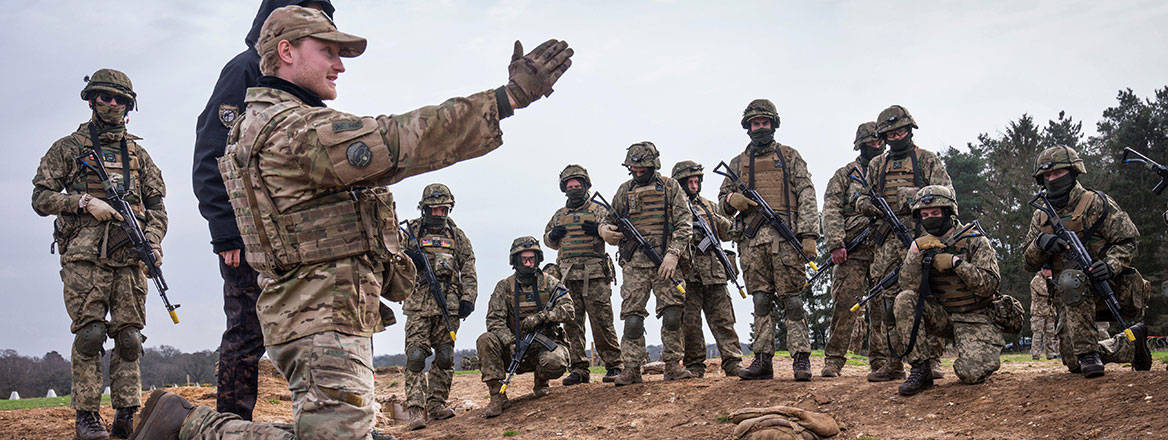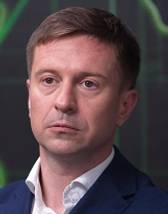How to Build Ukraine’s Military Effectiveness and Avoid a War of Attrition
With Russia increasingly pressing its numerical advantage, Ukraine and its partners need to devise a new strategy for strengthening Ukraine’s defence if they are to avoid playing to Russia’s strengths in an attritional conflict.
Despite all the attempts of the West and especially the US to avoid further escalation in the Russo-Ukrainian war, Russia is not going to abandon its original plans to destroy Ukraine and is making all possible efforts to achieve this goal. Even colossal losses in personnel and military equipment have not forced Moscow to abandon its goal (as of May 2024, Russian losses amounted to over 500,000 servicemen, over 7,000 tanks, over 14,000 armoured combat vehicles, over 13,000 artillery systems, hundreds of aircraft and helicopters, and dozens of warships). The number of Russian troops located on the territory of Ukraine has increased from 140,000 that participated in the invasion in February 2022 to almost 650,000, with over 2,500 tanks, over 5,000 armoured combat vehicles, and over 3,500 artillery systems. This figure does not include Russian units carrying out aggression against Ukraine from the territory of Russia itself, in particular from the territory of the Bryansk and Belgorod regions.
In the current operation against Kharkiv alone, which was launched by the Russians in May 2024, about 50,000 troops are involved. Fortunately, the Russian operation has not yet been very successful, and has already turned into another large battle for a small Ukrainian town, this time the town of Vovchansk, which is located on the border with Russia. Even so, an attempted new offensive against Kharkiv – Ukraine's second-largest city with a population of over 1.4 million, located only 30 km from the Russian border – and a possible attack on Sumy, another regional centre 20 km from the border, is undoubtedly a significant escalation, and requires a rethinking of approaches to the war with Russia, both for Ukraine and its allies. Trying to win a war with Russia at the expense of only a symmetrical mass increase is a flawed strategy, given that Russia has a larger number of human reserves (about 30 million people in Russia, compared to about 8 million people in Ukraine), significant stockpiles of weapons and military equipment inherited from the USSR or built by 2022, as well as a developed defence-industrial complex and a powerful mining industry that satisfies its needs for a significant amount of strategic materials. Undoubtedly, Russian models are inferior to Western ones in quality, but Russia is clearly winning the competition with the West in the mass and cheap production of weapons and military equipment.
In such a situation, when achieving a simple numerical advantage over the enemy is impossible, the main priority of the joint efforts of Ukraine and its international partners should be to increase the military effectiveness of the Armed Forces of Ukraine (AFU). Full military effectiveness in this context should be understood as the ability to achieve maximum combat power at the expense of resources that are available not only physically, but also politically, and so it is important to focus not only on tactical and operational effectiveness, but also strategic and political effectiveness. Combat power, in turn, is the ability to inflict damage on the enemy in the amount necessary to achieve the goals of the war, while at the same time limiting the damage that the enemy can inflict in response. To assess the current state of the military effectiveness of the AFU, the methodology proposed by Allan Millet, Williamson Murray and Kenneth Watman in 1986 – if adapted to today's conditions – remains extremely helpful.
Russia's latest offensive against Kharkiv is undoubtedly a significant escalation, and requires a rethinking of approaches to the war both for Ukraine and its allies
The political effectiveness of a military organisation consists of its ability to receive financial support, the provision of weapons and military equipment, and the replenishment of human forces in the volume and quality necessary to eliminate existing threats. For the AFU, this means first of all the ability to convince Ukraine's international partners both to increase military-technical assistance and to lift restrictions on the supply of certain weapons to Ukraine, as well as restrictions on how they can be used. The political effectiveness of the AFU remains insufficient, as Ukraine’s defence needs are currently only partially met. Since decisions on increasing aid and increasing investment in the defence industry are made by the political leadership of partner countries, which mostly do not have professional military expertise, it is extremely important to involve representatives of the armed forces of these countries in the assessment of Ukraine's needs in order to confirm the validity of such requests. At the same time, the provision of Ukraine's defence needs cannot depend exclusively on Western aid. Increasing the political effectiveness of the AFU requires the Ukrainian military to convince the government of Ukraine of the need for unpopular decisions related to mobilisation, as well as searching for new ways of obtaining weapons that would involve direct financial obligations on Ukraine’s part, such as, for example, lend-lease.
The strategic effectiveness of a military organisation comprises its ability to achieve national goals determined by the political leadership through the use of military force. The calculation of the necessary resources also depends on these goals. The AFU are in an extremely difficult situation, as the political leaderships of both Ukraine and its partner countries see these goals in different ways, which negatively affects the ability of the AFU to develop and implement a military strategy aimed at achieving them. The leadership of Ukraine aims to liberate the country’s entire territory. Such a goal is undeniably fair and rational, but it ignores the fact that the liberation of territory does not necessarily mean the end of the war. Since neither Ukraine nor its partners are aiming for the complete defeat and occupation of Russia, even after the liberation of all of Ukraine’s territories, Russia will retain the ability to continue aggression against Ukraine, to conduct military operations from its territory, and to launch missile and bomb attacks on civilian infrastructure. The political leadership of Ukraine’s partner countries, in particular the US, ideally wants to force Russia into negotiations, at which point a decision will be made to end hostilities, but the issue of the complete withdrawal of Russian troops from the territory of Ukraine will not be discussed. Such a goal, despite the fact that it seems more achievable, also does not create the conditions for long-term peace, and will be viewed by Russia as a tactical respite which can be used to restore and build capabilities and plan a new phase of aggression, as was the case with the Minsk agreements.
It is obvious that ending the war with Russia requires reaching such a moment when the aggressor has no ability or desire to continue it and is forced to withdraw troops from the territory of Ukraine with or without concluding a new peace agreement (as happened with the US in Vietnam in 1972 , or with the Soviet Union in Central Europe in the early 1990s). Accordingly, bringing Russia to a state of inability/unwillingness to continue the war should be the basis of a grand strategy that encompasses all means available to Ukraine and its partners, including non-military ones. The military strategy, as the most important part of the grand strategy, should in turn be aimed at inflicting unacceptable damage on Russia through the use of the AFU.
The size and structure of the AFU, as well as the volumes and types of weapons and military equipment needed, must be calculated in accordance with such a military strategy. The industrial base, production capabilities, and access to strategic materials necessary for the production of weapons are an integral part of strategic effectiveness and require significant improvement. When planning a military strategy, maximum effectiveness can be achieved by identifying the enemy's critical vulnerabilities and directing efforts towards their exploitation. Ukraine's asymmetric naval strategy, which has already made it possible to destroy several dozen Russian ships with relatively cheap naval drones and forced the Russian Navy to significantly reduce its operations in the Black Sea, is a brilliant example of such an approach. NATO has historically had and still maintains air superiority over Russia, so increasing the aviation capabilities of the Air Force of Ukraine at the expense of a significant number of Western systems would be a completely logical and achievable step in the short term. NATO has at its disposal a large number of such systems, as well as air-to-air missiles, and could provide these systems to Ukraine, even temporarily. The number of pilots of the Air Force of Ukraine who have already been trained to pilot these systems is not an obstacle in this case, since among the foreigners (including citizens of countries that are not members of NATO) who have shown a readiness to join the International Legion of the AFU, there are many former pilots with such experience. These individuals could combine combat sorties with instructor work for a time.
Operational effectiveness in the conditions of modern large-scale warfare, characterised by a high level of innovation, requires the leadership of the AFU to be able to identify and implement useful technologies extremely quickly, as well as to change operational concepts and doctrines taking into account constant technological changes, finding ways to combine old and new platforms in a combined arms battle. In modern warfare, the side that is able to adapt to these changes more quickly has a tremendous advantage. Such adaptability also requires a readiness on the part of military leaders for personal discomfort associated with the need to abandon old methods, approaches and even systems that have lost their relevance in modern conditions. Operational concepts must be developed in order to achieve the military strategy and meet its requirements. The same flexibility and willingness to quickly adapt to new challenges is also necessary for Ukraine's partners. This concerns, first of all, their ability to quickly improve military equipment not only because Ukraine needs it, but also because the security of the partners themselves depends on its improvement. The current pace of this improvement is completely unsatisfactory, and the approaches to identifying and eliminating the shortcomings of such systems require a complete revision.
The lack of a strategy for victory will turn this war into a war of attrition for Ukraine, which completely coincides with Russian interests
Tactical effectiveness, the improvement of which is given the most attention, is the last in this list and should be fully subordinated to the logic of the general military strategy and operational concepts aimed at its achievement. Otherwise, the conflict between tactics and strategy usually leads to strategic rather than tactical inefficiencies. In addition, tactics must take into account the presence or absence of operational capabilities. This problem is particularly noticeable in the development and training of Ukrainian military personnel. For example, the training of Ukrainian ground units in 2023 was largely focused on practicing assault actions as part of small groups, rather than on offensive operations as part of large units during a breakthrough of the enemy's deep defence, which did not correspond to the original plans for the counteroffensive. The training programme carried out by Ukraine’s Western partners was also overly concerned for a long time with actions in the conditions of the stabilisation phase of the war, which is an integral part of expeditionary operations but does not make any sense when liberating one's own territories. Moreover, such training causes military personnel to develop reflexes that may even be harmful in the context of a major conventional war. In general, the tactical training of the AFU does not fully take into account the nature of the current confrontation, and is also not sufficiently aimed at exploiting the enemy's weaknesses.
In summary, the biggest obstacle to improving the effectiveness of the AFU is the lack of a clear and agreed-upon grand strategy for winning the war by Ukraine and its partners, as well as a military strategy, which is an integral component of this. This is due, first of all, to a lack of clear political goals accepted by all of Ukraine's partners, which would ensure not only the liberation of its territory, but also long-term security in Europe. In the absence of such goals, a grand strategy and a general military strategy for victory in this war, the planning of individual operations, the assessment and provision of the needs of the AFU, the development of training programmes and preparation, and the introduction of new tactical techniques can at best support Ukraine’s ability to conduct the war, but not to win it. The lack of a strategy for victory will turn this war into a war of attrition for Ukraine, which completely coincides with Russian interests.
The views expressed in this Commentary are the author’s, and do not represent those of RUSI or any other institution.
Have an idea for a Commentary you’d like to write for us? Send a short pitch to commentaries@rusi.org and we’ll get back to you if it fits into our research interests. Full guidelines for contributors can be found here.
WRITTEN BY
Oleksandr V Danylyuk
RUSI Associate Fellow, Military Sciences
- Jim McLeanMedia Relations Manager+44 (0)7917 373 069JimMc@rusi.org



